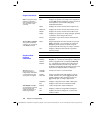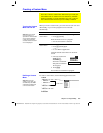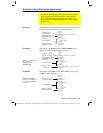
310 Chapter 17: Programming
17PROGRM.DOC TI-89/TI-92 Plus: Programming (English) Susan Gullord Revised: 02/23/01 1:14 PM Printed: 02/23/01 2:18 PM Page 310 of 40
The first step in debugging your program is to run it. The
TI
-
89 / TI
-
92 Plus
automatically checks each executed command for
syntax errors. If there is an error, a message indicates the nature of
the error.
¦
To display the program in the
Program Editor, press
¸
.
The cursor appears in the
approximate area of the error.
¦
To cancel program execution and return to the Home screen,
press
N
.
If your program allows the user to select from several options, be
sure to run the program and test each option.
Run-time error messages can locate syntax errors but not errors in
program logic. The following techniques may be useful.
¦
During testing, do not use local variables so that you can check
the variable values after the program stops. When the program is
debugged, declare the applicable variables as local.
¦
Within a program, temporarily insert
Disp
and
Pause
commands
to display the values of critical variables.
−
Disp
and
Pause
cannot be used in a user-defined function. To
temporarily change the function into a program, change
Func
and
EndFunc
to
Prgm
and
EndPrgm
. Use
Disp
and
Pause
to
debug the program. Then remove
Disp
and
Pause
and change
the program back into a function.
¦
To confirm that a loop is executed the correct number of times,
display the counter variable or the values in the conditional test.
¦
To confirm that a subroutine is executed, display messages such
as
"Entering subroutine"
and
"Exiting subroutine"
at the beginning and
end of the subroutine.
Command Description
Try...EndTry
Defines a program block that lets the program
execute a command and, if necessary, recover from
an error generated by that command.
ClrErr
Clears the error status and sets the error number in
system variable
Errornum
to zero.
PassErr
Passes an error to the next level of the
Try...EndTry
block.
Debugging Programs and Handling Errors
After you write a program, you can use several techniques to
find and correct errors. You can also build an error-handling
command into the program itself.
Run-Time Errors
Debugging
Techniques
Error-Handling
Commands


















